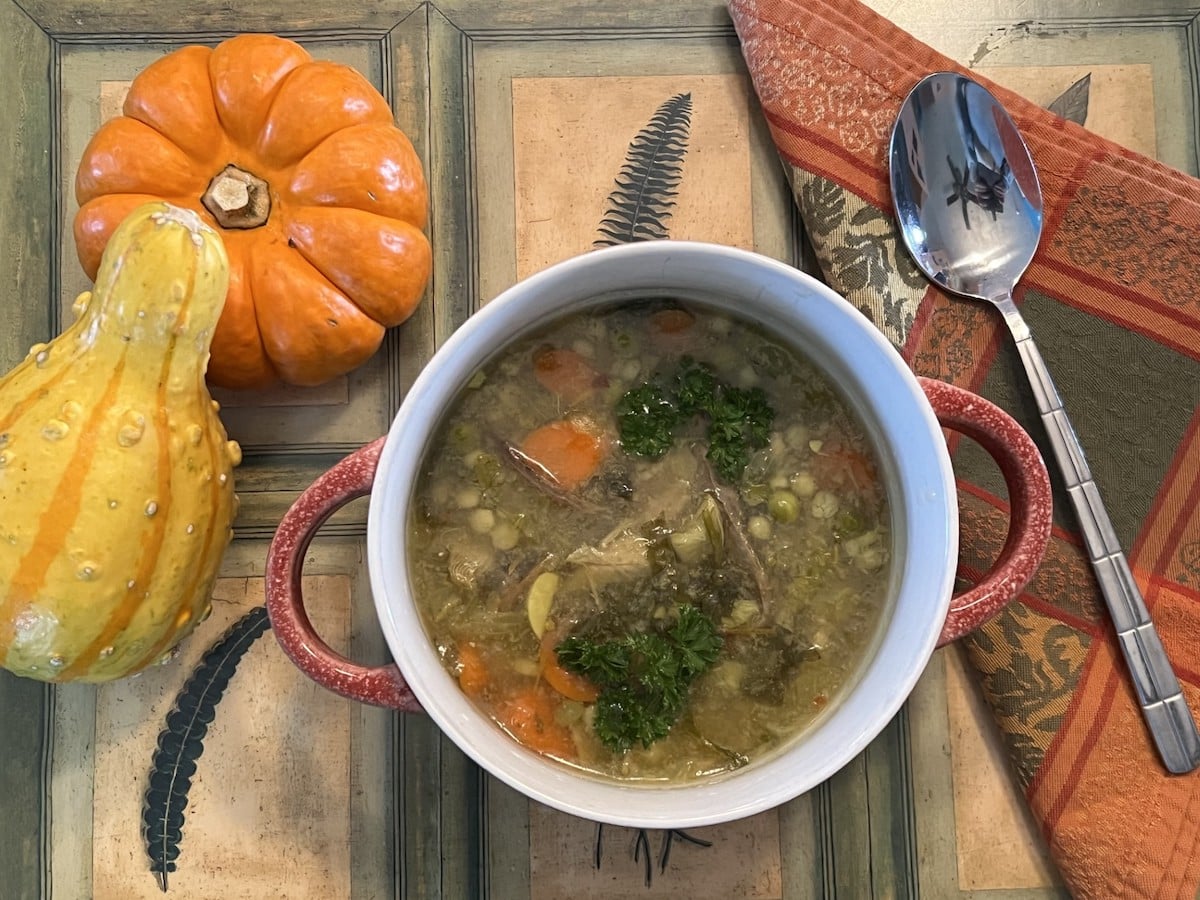
Share this post!
The frittata: a delicious food for breakfast, lunch or dinner. This Summer Squash, Spinach, and Leek Frittata is a fantastic summertime meal if you want to use up an abundance of garden squash! Try a mix of yellow squash and zucchini, or use 2 of the same. The addition of fresh dill and hearty greens makes this a light and fresh meal.
You may know the differences between omelets and frittatas, but here are some key points to note:
- An omelet is like a hot egg pancake you can add fillings to, while a frittata is more like an egg custard with vegetables and other fillings.
- An omelet is cooked completely on the stovetop, preferably in a non-stick pan (just make sure the pan is either a well-seasoned cast iron or a safe non-stick!); a frittata is started on the stovetop until the eggs begin to set, then finished in the oven (therefore, an oven-safe pan is required).
- The omelet is typically a quick meal for one; a frittata is a food for sharing. If you’re planning for a crowd, it would be recommended to prepare a frittata instead of cooking multiple omelets.
- Omelets are served hot straight out of the pan, while a frittata can be eaten immediately or at room temperature. A frittata works fabulously as leftovers, or can be prepared in advance.
- An omelet’s ingredients (or at least most of them) are added after the egg has finished cooking. A frittata’s ingredients are added to the eggs before cooking and the fillings will cook inside the egg mixture.
- An omelet can contain milk, but it can be made without milk for a thicker, eggier dish; the frittata depends on the creaminess of milk to create the custard-like texture.
Why we love it
- Let’s compare an omelet and frittata from a nutritional standpoint. Your typical omelet, which serves one person, will call for 3 eggs. On the other hand, a frittata provides approximately 1.5 eggs per person (in this recipe, 6 eggs makes 4 servings). If you are aiming to increase protein, choline, selenium, vitamins A and D, and vitamin B12, eggs are a fantastic food to consume! An omelet will serve as a better stand-alone meal, while a frittata can be served with a side dish to create a balanced meal.
- One reason we are a fan of this recipe is the inclusion of leeks, which are wonderful – and often forgotten! – substitute for onions. Onions are high in FODMAPs, and may cause digestive upset for those with gut imbalances. Most people tolerate leeks, even while on various therapeutic protocols. Leeks in amounts stated in the recipe are allowed on diets like the low FODMAP, Specific Carbohydrate Diet, and the SIBO Specific Food Guide. Just be sure to include milk and cheese that is also compliant with the diet. If you are looking for a recipe to prepare while on one of these dietary protocols, try out this frittata!
Summer Squash, Spinach, and Leek Frittata
Ingredients
2 leeks, trimmed and cleaned
1 yellow summer squash, thinly sliced
1 zucchini, thinly sliced
1 tbsp oil or butter
2 cups spinach (packed), coarsely chopped, no stems (or try other greens like chard or kale!)
6 eggs
⅓ cup milk (cow’s milk or dairy-free)
Salt, to taste
Pepper, to taste
2 tsp fresh dill, minced
½ cup grated cheese of choice (dairy-free, if needed), optional
Instructions
- Preheat the oven to 350.
- Split the leeks lengthwise in half, clean, and then slice crosswise into thin slices.
- Trim and slice the squash.
- Heat the oil or butter in a 10-inch sauté pan over moderate heat.
- Add the leeks and sauté until wilted.
- Add the squash and spinach, sauté until just tender.
- Beat the eggs and milk, add dill, salt and pepper to taste.
- Heat the pan with vegetables over moderate heat. Add the egg mixture and lower the heat.
- Stir the mixture to coat the vegetables and cook slowly until the eggs are set but creamy in the middle.
- Sprinkle with cheese and put the pan in the oven, uncovered, until set.
- Slide the frittata onto a plate or cutting board.
- Cut into 4 wedges. Serve immediately.
Serves 4
Want to learn how to create and prepare recipes like this?
Join our Natural Food Chef Program! Picture yourself in your kitchen surrounded by nothing but organic vegetables, whole grains, top-quality meats, eggs and a range of the more unusual things like pâté, kimchi, kefir and bone broth. If you resonate with the idea of creating delicious meals that are not only healthy but downright regenerative, then join us for our 15-week program! Reach out to our Admissions team with any questions about the NFC program: ad********@*******ol.com
Daina Rasutis is a graduate of NTI’s Nutrition Therapist Master Program. Her background in Environmental Engineering has allowed her to combine the best of science with a love for nutrition, the environment & delicious food. Follow Daina’s cooking creations and lifestyle tips on her website: www.tabletocrave.com
Image use permission given by Table to Crave
Share this post!




















